With many thanks to Dave and the volunteer team, it was a packed day of fun. The project generated lots of interest and we are looking forward to next year when the Workhouse to Hospital Exhibition will be pushing the beds out onto the veranda!
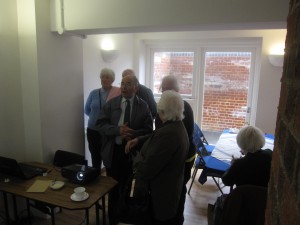
Another successful event! Ex-staff from St Luke’s Hospital and volunteers spent a lovely afternoon chatting about times gone by. We now have more material for our archive including a poem and some wonderful photographs of the maternity wards! Barry Mazur, an exhibition designer, gave an exciting talk about his ideas about for our exhibition early next year.
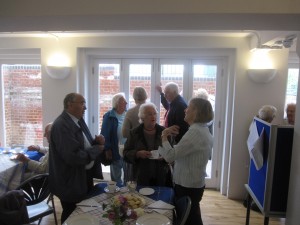
We would like to say a big thank you to every one who attended. Jane, our project coordinator, put on a wonderful spread including freshly made scones and home-made jam! We were well and truly spoilt!
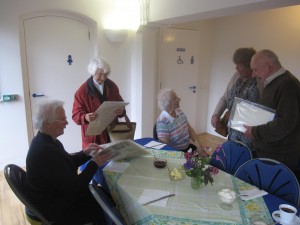
We put on a slide show of photographs collected by the project dating from 1899 to 1996, and a small exhibition to showcase our research. Staff spent time looking through old pantomime brochures, newspaper clippings and the St Luke’s Social Club magazine.
Have you worked or trained at St Luke’s Hospital, Guildford? Then you are invited to join us for afternoon tea.
Date: Tuesday 11th June 2013
Time: 2.30 – 5 pm.
Place: The undercroft at The Spike, Warren Road.
This is your chance to meet the volunteer researchers and to see some of the photographs and articles we’ve collected so far!
If you have a story about St Luke’s then we would love to hear it!
We look forward to meeting you!
This month, we visited the Florence Nightingale Museum to see their new exhibition ‘Workhouses- Segregated Lives‘.
Photo of Florence Nightingale: Florence Nightingale from Carte de Visite circa 1850s
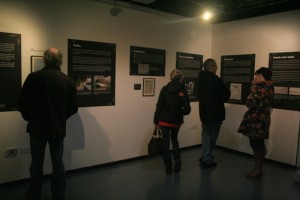
Throughout the 18th and early 19th century, Florence Nightingale was a dominant figure in nursing. She revolutionised the way in which military hospitals were administered and used statistics to reinforce her ideas – quite unheard of for a female of Victorian society!
One of her biggest achievements was the introduction of professional nursing in workhouse infirmaries. Before these reforms, workhouse inmates cared for their fellow sick – what a job!
Nightingale was also interested in hospital design. The ‘Nightingale Ward’ system featured heavily in new Victorian hospitals – including new workhouse infirmaries such as the Guildford Union Workhouse. These long wards allowed for the circulation of fresh air and to admit sunshine in.
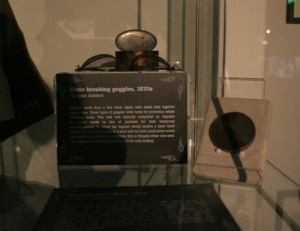
We found the new exhibition an interesting perspective of life within the workhouse and we were curious to see how a project of similar theme can be displayed for the public. We were most excited to see our workhouse coin, protective goggles and oakum – from the Spike Heritage Centre – on prominent display for the first time. The Spike goggles even featured in an article in The Guardian, which was very exciting! It’s certainly given us food for thought and we can’t wait to put together our own exhibition showcasing our research of St Luke’s Hospital – from a workhouse infirmary to a NHS hospital.
The ‘Workhouse – Segregated Lives’ exhibition is on at the Florence Nightingale Museum until the 5th July.
Don’t forget to visit the ‘Workhouse – Segregated Lives‘ exhibition at the Florence Nightingale Museum! They are showcasing some items from the Spike Heritage Centre, Guildford including the stone breaking goggles as featured in the Guardian!
Dates: 28th February – 5th July 2013
Key dates:
Thursday 14th March – Dissecting the Workhouse Dead
Historian Ruth Richardson will explain the terrible fear of the pauper funeral, its historical roots, and its long shadow into our own times.
Thursday 24th April – Contagion in the Workhouse
Historian Andrea Tanner examines how workhouses cared for the unfortunate victims of infectious diseases that raged through the streets of Victorian London.
Thursday 9th May – ‘Down and Out’: The Lives of Tramps and Vagrants (1750 – 1950)
Simon Fowler will look at the experiences of vagrants and the attempts to help or hinder them in the bleak casual wards of the workhouses.